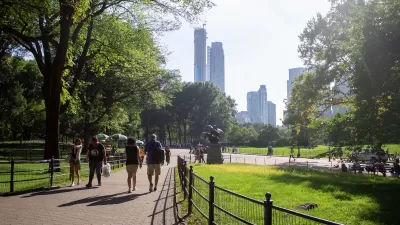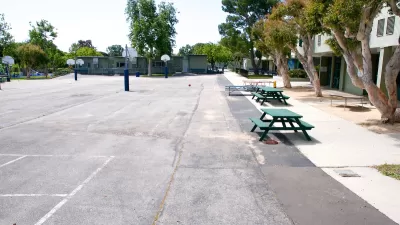How trauma-informed urbanism can make cities and their residents healthier and more resilient.

An opinion piece by Nicholas Lalla in Fast Company reveals the high social and economic costs of traumatic disasters, highlighting how cities can boost their resiliency and prepare for disaster recovery.
“A city that isn’t resilient enough to withstand the aftermath of a disaster, manmade or natural, isn’t one that can serve for long as a viable center of commerce, culture, and society,” Lalla writes. “Research published in The Journal of Clinical Psychiatry found that in 2018, post-traumatic stress disorder cost the U.S. economy over $230 billion, while research from the University of Pennsylvania found that childhood trauma alone cost society over $450 billion each year.”
In Lalla’s view, “Above and beyond strong infrastructure, such as levees that protect my hometown of New Orleans against hurricanes, cities need to better anticipate, mitigate, and heal from trauma itself.” Lalla describes an emergent field known as trauma-informed urban development, an approach that focuses on “resilience, community cohesion, and aid in recovery.” The approach includes strategies such as consulting with mental health professionals, connecting people with nature and green spaces that can help improve mental health and air quality, supporting vibrant, mixed-use developments, and providing economic opportunities to help residents recover after disasters.
Many of the goals of the trauma-informed urban development movement dovetail with the goals of other urbanists: walkability, better public transit, green spaces, and economic opportunity, all qualities that help cities “stand a good chance of being resilient to trauma.”
FULL STORY: How we build cities can help us overcome traumatic events

Alabama: Trump Terminates Settlements for Black Communities Harmed By Raw Sewage
Trump deemed the landmark civil rights agreement “illegal DEI and environmental justice policy.”

Planetizen Federal Action Tracker
A weekly monitor of how Trump’s orders and actions are impacting planners and planning in America.

The 120 Year Old Tiny Home Villages That Sheltered San Francisco’s Earthquake Refugees
More than a century ago, San Francisco mobilized to house thousands of residents displaced by the 1906 earthquake. Could their strategy offer a model for the present?

In Both Crashes and Crime, Public Transportation is Far Safer than Driving
Contrary to popular assumptions, public transportation has far lower crash and crime rates than automobile travel. For safer communities, improve and encourage transit travel.

Report: Zoning Reforms Should Complement Nashville’s Ambitious Transit Plan
Without reform, restrictive zoning codes will limit the impact of the city’s planned transit expansion and could exclude some of the residents who depend on transit the most.

Judge Orders Release of Frozen IRA, IIJA Funding
The decision is a victory for environmental groups who charged that freezing funds for critical infrastructure and disaster response programs caused “real and irreparable harm” to communities.
Urban Design for Planners 1: Software Tools
This six-course series explores essential urban design concepts using open source software and equips planners with the tools they need to participate fully in the urban design process.
Planning for Universal Design
Learn the tools for implementing Universal Design in planning regulations.
Clanton & Associates, Inc.
Jessamine County Fiscal Court
Institute for Housing and Urban Development Studies (IHS)
City of Grandview
Harvard GSD Executive Education
Toledo-Lucas County Plan Commissions
Salt Lake City
NYU Wagner Graduate School of Public Service





























